Introduction
The food of Barcelona is a testament to its rich and diverse history. Nestled between the Mediterranean Sea and the mountains, this Catalan capital has long been a melting pot of flavours, shaped by the cultures that have graced its ports. From the rustic charm of traditional Catalan dishes to the innovative creations of modern gastronomy, Barcelona’s cuisine tells the story of a city that has always embraced change while honouring its roots.
Picture yourself strolling through Barcelona’s labyrinthine streets, where each corner unveils a new sensory delight. The aroma of freshly baked bread intermingles with the briny scent of the sea. The symphony of laughter and clinking glasses resonates from bustling tapas bars. Welcome to Barcelona, a city where food is not just sustenance but a vibrant celebration of life and culture, a feast for all your senses.
In this blog post, we’ll explore some of Barcelona’s signature dishes, including the iconic paella, the sparkling cava, and the world-renowned Iberico ham. But our journey doesn’t stop there. We’ll dive into the art of tapas, uncover the secrets behind popular dishes like patatas bravas and discover the etiquette of tapas culture.
No culinary tour of Barcelona would be complete without a visit to the famous Mercado de la Boqueria. This vibrant market is known for its colourful stalls of fresh produce, aromatic spices, and mouthwatering street food. It’s a feast for the senses, where you can taste, smell, and see the essence of Barcelona’s culinary scene.
Join me on this culinary odyssey through Barcelona as we savour the flavours, traditions, and innovations that make this city a gastronomic paradise. From the lively streets to the hidden corners, we’ll uncover the tastes and experiences that define Barcelona’s food scene and leave you craving more.
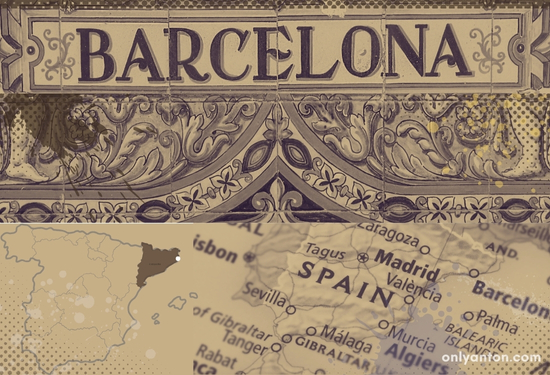
Location and Geography of Barcelona
Barcelona, the vibrant capital of Catalonia, is nestled on the northeastern coast of Spain. It stands out as the second-most populous municipality in the country, following Madrid. With a population of around 1.6 million, this city is one of the major metropolises of the Mediterranean Sea.
Geographically, Barcelona is poised between the rivers Llobregat and Besós. The lush Serra de Collserola mountain range to the west frames the city. Approximately 150 kilometres (90 miles) south of the French border, the city’s strategic location has historically made it a significant port and cultural hub.
Barcelona’s location south of the majestic Pyrenees mountains enhances its unique cultural and architectural heritage, underpinned by its status as the capital of the autonomous community of Catalonia. The city’s subtropical, humid climate contributes to its lively outdoor culture and vibrant street life, which are integral to its identity. This dynamic setting not only shapes the city’s culture but also deeply influences its culinary traditions. The result is a fascinating blend of history, art, and gastronomy that beckons travellers and food enthusiasts alike.
The Food of Barcelona and Catalan Cuisine
Barcelona, a jewel of the Mediterranean, is not only famous for its architectural wonders but also for its culinary treasures. The city’s cuisine, a reflection of Catalan gastronomy, blends fresh, vibrant ingredients from the sea, the mountains, and the fertile plains surrounding it.
Paella: The Quintessential Spanish Dish
One cannot talk about Spanish cuisine without mentioning paella, and Barcelona offers its own unique take on this classic dish. Originally from Valencia, paella has been embraced by the entire country and adapted to local tastes. The traditional version features a mix of seafood, chicken, rabbit, and vegetables cooked in a shallow pan over an open flame. The critical ingredient is short-grain rice, which absorbs the rich flavours of the saffron-infused broth. In Barcelona, you might find a variation like Paella de Marisco, which focuses solely on seafood. Alternatively, look for Paella Mixta, which combines meat and seafood for a hearty feast.
Fideuà: A Noodle Twist on a Classic
Fideuà is often considered paella’s lesser-known cousin but is equally cherished in Barcelona. This dish replaces rice with thin noodles, typically vermicelli, and is usually loaded with a variety of seafood, such as squid, prawns, and clams. Fideuà, cooked similarly to paella, is a delightful alternative for those exploring beyond the traditional.
Escalivada: A Celebration of Vegetables
Escalivada is a testament to the simplicity and elegance of Catalan cuisine. This dish features a medley of roasted vegetables, including eggplants, red peppers, onions, and tomatoes, all drizzled with olive oil and sometimes garnished with anchovies. The slow roasting process caramelizes the vegetables, bringing out their natural sweetness and smoky flavour.
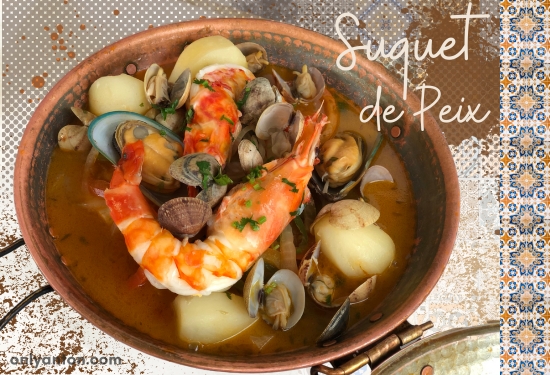
Suquet de Peix: A Fisherman’s Stew
Suquet de Peix is a traditional Catalan fish stew, born from the creativity of fishermen looking to make use of their daily catch. This rustic dish combines fish and shellfish with potatoes, tomatoes, garlic, and various herbs, all simmered in a fragrant broth. The result is a comforting and flavorful stew that is a true homage to the bounties of the Mediterranean Sea.
Each of the dishes here offers a glimpse into the heart of Catalan cuisine. They showcase the region’s rich culinary heritage and the reliance on fresh, local ingredients. As we journey through Barcelona’s food scene, we’ll delve deeper into the flavours and traditions that make this city a gastronomic delight.
Sipping on Tradition: Cava and Wine
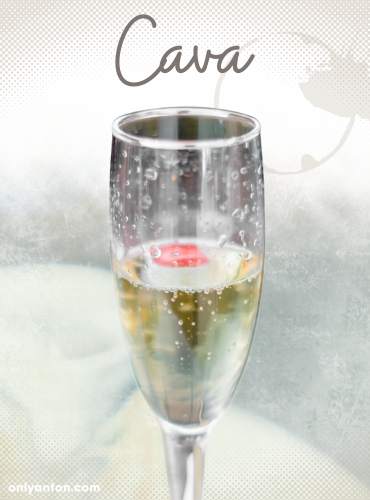
Cava: The Sparkling Jewel of Catalonia
Cava, Spain’s answer to Champagne, is a sparkling wine that holds a special place in the hearts of Barcelonans and wine enthusiasts worldwide. The story of cava began in the late 19th century.
Local winemakers in the Penedès region, just south of Barcelona, adopted the traditional method of Champagne production to create their own effervescent wine.
Today, cava is recognized for its quality and diversity. Strict regulations govern its production to ensure its status as a symbol of Catalan craftsmanship.
Wine Regions Near Barcelona
Some of Spain’s most renowned wine regions surround Barcelona. Each region offers its own unique terroir and wine styles:
- Penedès: The heartland of cava production, Penedès is known for its still white and red wines, including varietals like Xarel·lo, Macabeo, and Tempranillo.
- Priorat: A prestigious wine region known for its potent and concentrated red wines, primarily made from Garnacha and Cariñena grapes.
- Empordà: Located in the northeast corner of Catalonia, this region produces various wines, including aromatic whites, robust reds, and sweet wines like Garnatxa de l’Empordà.
Tips for Wine Tasting and Pairing
- Start with Cava: Begin your wine-tasting journey with a glass of cava to cleanse your palate and set the stage for the flavours to come.
- Explore Local Varietals: To truly appreciate the region’s unique wine profile, taste wines made from indigenous Catalan grapes like Xarel·lo (or Xarel-lo), Garnacha, and Cariñena.
- Pairing with Catalan Dishes: When pairing dishes with wine, consider the flavours and textures of the dishes. For example, a crisp and acidic white wine like Xarel·lo pairs well with seafood dishes like suquet de peix. A robust Priorat red complements heartier fare like escalivada or grilled meats.
- Visit Vineyards and Wineries: Visit the nearby vineyards and wineries to experience the winemaking process firsthand and enjoy tastings in the picturesque Catalan countryside.
By indulging in the wines of Catalonia, you not only savour the region’s flavours but also partake in a centuries-old tradition that continues to thrive in the hills and valleys surrounding Barcelona.
The Food of Barcelona: the Art of Tapas
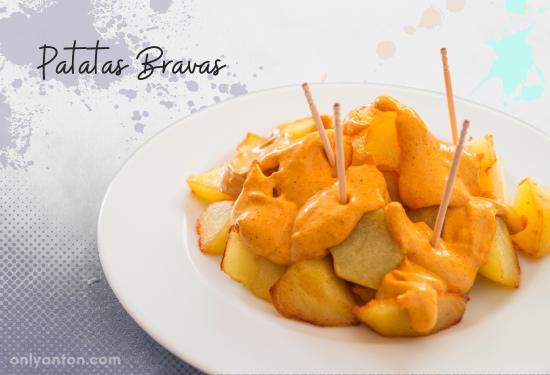
Tapas: More Than Just a Snack
In Barcelona, tapas are not just food but a way of life. These bite-sized, savoury dishes are best enjoyed when shared with loved ones and paired with a cold beer or glass of wine. The tapas tradition, deeply ingrained in Spanish culture, symbolizes social interaction and culinary creativity. It’s a way for friends and family to come together, share stories, and enjoy a leisurely meal, reflecting the city’s laid-back and sociable atmosphere.
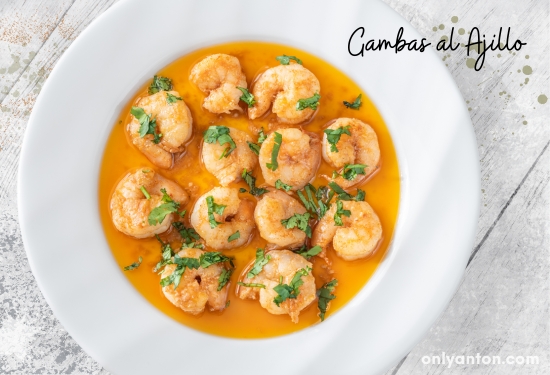
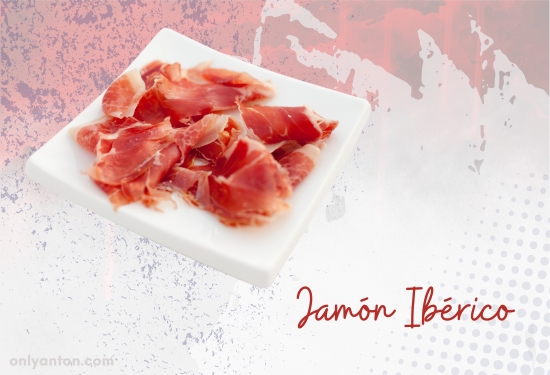
Popular Tapas Dishes in Barcelona
- Patatas Bravas: A beloved tapas staple, patatas bravas are crispy fried potatoes served with a spicy tomato sauce and aïoli. This dish perfectly combines textures and flavours, with the creamy aïoli balancing the sauce’s heat.
- Gambas al Ajillo: This simple yet flavourful dish features succulent shrimp cooked in olive oil with garlic and chile peppers. Served sizzling in a clay pot, gambas al ajillo is a must-try for seafood lovers.
- Jamón Ibérico: Considered one of the finest hams in the world, jamón ibérico is a cured ham made from the Iberian pig. Thinly sliced, it has a rich, nutty flavour and melt-in-your-mouth texture that pairs wonderfully with a glass of cava.
- Pan con Tomate: Often seen as a quintessential Catalan tapa, pan con tomate features ripe, juicy tomatoes grated and mixed with garlic and extra virgin olive oil, then spread over thick slices of rustic bread. A sprinkle of salt enhances the fresh flavours, making it a refreshing start to any tapas meal.
- Tortilla de Patatas: Known also as a Spanish omelette, this comforting dish is a staple in Spanish cuisine. Made from a wholesome mix of eggs, potatoes, and onions, all cooked together in olive oil, tortilla de patatas is enjoyed either hot or cold and is celebrated for its delightful simplicity and satisfying nature.
These tapas highlight Barcelona’s culinary diversity and embody the city’s rich gastronomic culture. They offer flavours that range from the earthy simplicity of pan con tomate to the decadent savouriness of jamón ibérico. Each dish invites diners to explore further into the heart of Catalan cuisine.
Adventurous Tapas Dishes in Barcelona
These dishes are not for the faint of heart but offer an authentic taste of traditional and bold Catalan cooking. They allow the adventurous eater to explore the depths of Barcelona’s rich culinary heritage. Each dish represents a part of the local gastronomy that is as diverse as the city itself.
Cargol (Snails):
- Cargol alla catalana: These snails are slowly cooked in a savoury tomato sauce with onions and peppers, offering a rich and earthy flavour that is a traditional favourite in Catalan cuisine.
- Cargol a la llauna: Prepared in a metal tray, these snails are seasoned, often grilled, and served with a dollop of aïoli. They combine a crispy exterior with a tender, flavorful interior.
- Cagolada: This rustic preparation involves cooking snails in their shells with lard, highlighting their natural flavours in a simple yet delicious manner.
Chipirones:
- These tiny squids are lightly floured and fried whole, creating a crispy, golden-brown delicacy. They are served hot with a wedge of lemon to enhance their delicate seafood flavours. For a truly local experience, try “huevos fritos con chipirones” at La Boqueria market, where the squid is paired with runny fried eggs.
Pulpo (Octopus):
- Often served as “pulpo a la gallega,” this dish features tender octopus slices seasoned with paprika and drizzled with olive oil, served atop boiled potatoes. It’s a testament to the simplicity and excellence of Spanish seafood preparation.
Mel i Mató:
- This dessert features fresh, soft, and creamy cheese known as Mató de Montserrat, typically paired with honey and nuts, offering a sweet, rich finish to a meal.
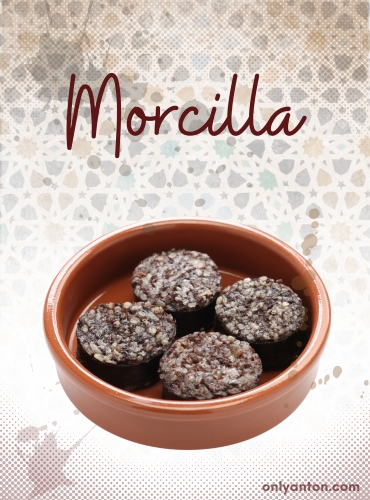
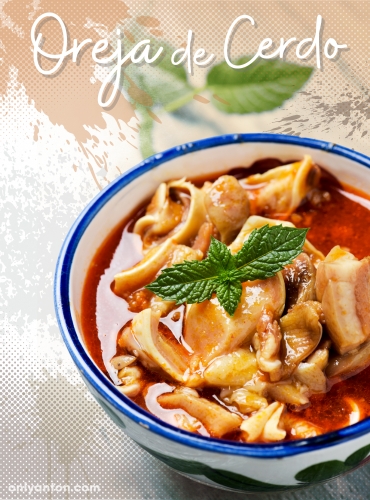
Morcilla (Blood Sausage):
- A robust sausage made from minced pork, blood, rice, and onions, this dish is a staple in Catalan cuisine known for its deep, complex flavours.
Oreja de Cerdo (Pig’s Ear):
- Often grilled or fried until crispy, pig’s ears are enjoyed for their crunchy texture and savoury taste. They are commonly served with a bit of sea salt and lemon. Alternatively, you may find a stewed version called oreja de cerdo guisada.
Callos (Tripe):
- A hearty stew made with veal or pork tripe, bacon, chorizo, and morcilla, seasoned with paprika, garlic, and chile. It’s a bold dish packed with intense flavours and a variety of textures.
Criadillas (Bull Testicles):
- Considered a delicacy, these are typically seasoned and sautéed or grilled, known for their unique texture and subtle flavour.
How to Order, Eat, and Enjoy Tapas Like a Local
- Start with a Few Dishes: When ordering tapas, it’s best to start with a few dishes and order more as you go. This allows you to sample a variety of flavours without overordering.
- Share with Friends: Tapas are meant to be shared. Order a selection of dishes and place them in the center of the table for everyone to enjoy.
- Pair with Drinks: Complement your tapas with local drinks. A cold beer or a glass of wine enhances the flavours of the dishes and adds to the overall experience.
- Take Your Time: Tapas are about savouring the moment. Don’t rush through your meal. Enjoy the conversation and the company as much as the food.
- Bar Hop: To get the full tapas experience, visit several bars or taverns in one night. Each place has its own specialties, so you can taste a wide range of dishes.
By embracing the tapas tradition, you’ll indulge in delicious food and participate in a cherished social ritual at the heart of Barcelona’s culinary culture.
The Mercado de la Boqueria: A Feast for the Senses
History and Significance
The Mercado de la Boqueria, or La Boqueria, is not just a market; it’s an emblem of Barcelona’s gastronomic heritage. Dating back to the 13th century, it started as an open-air market outside the city walls. Over the centuries, it evolved into a bustling hub of commerce and culture. Today, La Boqueria is not only a place where locals shop for fresh produce but also a must-visit destination for food enthusiasts from around the world.
Atmosphere and Stalls
Stepping into La Boqueria is like entering a kaleidoscope of colours, sounds, and aromas. The market is alive with the chatter of vendors and shoppers, the clinking of glasses from tapas bars, and the vibrant displays of fresh fruits, vegetables, seafood, and meats. Each stall is a mini-gallery, artfully arranged with the day’s freshest offerings.
Variety of Foods
La Boqueria is a treasure trove of culinary delights. You can find everything from exotic fruits and rare spices to artisanal cheeses and cured meats here. Seafood stalls showcase an array of fish and shellfish, while butchers offer a selection of local and Iberian meats.
Must-Try Foods
- Fresh Seafood: At one of the market’s seafood bars, you can sample some of the freshest seafood, such as oysters (ostras) or prawns (gambas).
- Iberian Ham: Taste the world-renowned Iberian ham (jamón ibérico) at one of the charcuterie stalls.
- Empanadas: Try these savoury pastries filled with a variety of ingredients, perfect for a quick snack.
- Fresh Juices: Refresh yourself with a glass of freshly squeezed juice, available in a rainbow of flavours.
Tips for Navigating the Market
- Go Early: Visit the market early in the morning to avoid the crowds and to see the market at its liveliest.
- Bring Cash: While some stalls accept cards, carrying cash for small purchases is a good idea.
- Sample Before Buying: Don’t hesitate to ask for a taste before purchasing. Many vendors are happy to offer samples.
- Explore the Side Alleys: Venture beyond the main aisles to discover hidden gems and specialty stalls.
A visit to La Boqueria is more than just a shopping trip. It’s an immersion into the heart of Barcelona’s culinary culture. Whether you’re a foodie or a curious traveller, the market offers a feast for the senses and a glimpse into the city’s gastronomic soul.
Exploring Barcelona’s Food Scene
Culinary Experiences
- Food Tours: Join a guided tour to explore Barcelona’s culinary highlights. These tours often include visits to markets like La Boqueria, tastings of local specialties, and insights into the city’s food culture.
- Cooking Classes: Participate in a cooking class to learn how to prepare traditional Catalan dishes. Many classes include a market visit to select fresh ingredients and hands-on instruction in a local kitchen.
- Wine Tasting: Explore the world of Catalan wines with a wine-tasting experience. Discover the nuances of local varietals and learn about the region’s winemaking traditions.
Neighbourhoods for Foodies
- El Raval: Known for its multicultural vibe, El Raval offers a diverse range of dining options, from trendy cafes to international eateries. Don’t miss the opportunity to try fusion dishes and street food.
- El Born: This charming neighbourhood is a food lover’s paradise, with its tapas bars, wine shops, and artisanal food stores. Wander through the narrow streets and discover hidden culinary gems.
Dining Out in Barcelona
- Meal Times: Be aware that meal times in Barcelona are later than in many other places. Lunch is typically served from 1:30 p.m. to 4:00 p.m., while dinner starts around 9:00 p.m. My travel companion and I once tried going for dinner at six. The waiter apologetically said that they had just stopped serving lunch.
- Tipping: Tipping is not customary in Barcelona, but it’s appreciated for exceptional service. A small 5-10% tip is sufficient for a nice meal.
- Reservations: It’s a good idea to make a reservation, especially for dinner, at popular restaurants.
- Tapas Etiquette: When enjoying tapas, it’s common to order a few dishes at a time and share them with your companions. Feel free to try different items and order more as you go.
By embracing Barcelona’s diverse food scene, you’ll satisfy your taste buds and gain a deeper understanding of the city’s culture and traditions. Whether you’re savouring tapas in a bustling bar or learning to cook a Catalan feast, each culinary experience is a step closer to the heart of Barcelona.
Culinary Souvenirs: Bringing Barcelona Home
Bringing back food-related souvenirs from Barcelona is a delicious way to extend your culinary journey. Share the flavours of Catalonia with friends and family. Here are some ideas for edible mementos that capture the essence of Barcelona’s gastronomy:
Olive Oil
Spain is one of the world’s largest producers of olive oil, and Catalonia boasts some excellent varieties. Look for extra virgin olive oil from local producers. It is often sold in beautifully designed bottles that make for an elegant gift.
Artisanal Cheeses
Catalonia is home to a wide range of artisanal cheeses, from the soft and creamy Mató to the aged and flavorful Garrotxa. Visit a local cheese shop or market to sample and select a few to take home.
Cava
While you can’t bring a whole tapas bar back with you, you can certainly bring back a bottle or two of Catalonia’s signature sparkling wine. Cava makes for a festive souvenir and is a great way to toast to your Barcelona memories.
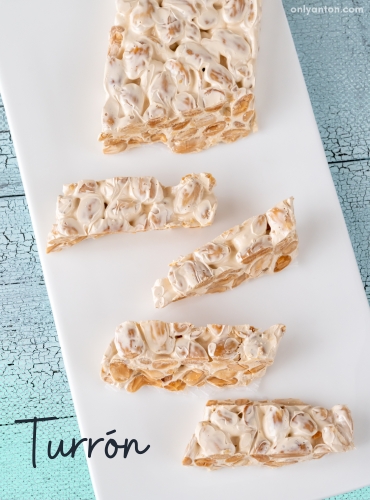

Turrón
This traditional Spanish nougat is made from almonds, honey, and egg whites. It is a sweet treat that comes in various flavours and textures. Turrón de Alicante is hard and crunchy, while Turrón de Jijona is soft and chewy. It’s a popular gift during the holiday season, but you can enjoy it year-round.
Saffron
Known as “red gold,” saffron is a prized Spanish spice used in dishes like paella. A small tin of saffron threads is lightweight, easy to pack, and adds a touch of Spanish flavour to any dish.
Pimentón
This Spanish smoked paprika is crucial in many Catalan and Spanish recipes. It comes in sweet, bittersweet, and spicy varieties, adding depth to stews, soups, and marinades.
When shopping for souvenirs, consider visiting local markets, specialty food shops, and artisanal producers to find high-quality products. By bringing home a taste of Barcelona, you’ll also be supporting local artisans and their crafts.
Conclusion
It’s clear that this vibrant city is a paradise for food lovers. From Catalan cuisine’s rich tradition to modern gastronomy’s innovative flavours, Barcelona offers a feast for the senses at every turn. Savour a plate of freshly made paella. Indulge in the bubbly delight of cava. Explore the bustling stalls of the Mercado de la Boqueria. Barcelona’s culinary offerings are as diverse as they are delicious.
However, the true essence of Barcelona’s food scene lies in the art of tapas. The simple act of sharing small plates becomes a celebration of community and culture. As you navigate the lively streets and charming neighbourhoods, each bite tells a story of history, tradition, and the joy of good food.
I encourage you to embrace the culinary adventures that await in Barcelona. Indulge in the flavours, immerse yourself in the culture, and discover the gastronomic wonders that make this city a must-visit destination for any food enthusiast. As you embark on your own culinary journey, I invite you to share your experiences, stories, and tips in the comments below. Together, let’s continue to celebrate the rich tapestry of Barcelona’s cuisine and the unforgettable memories it creates.
Further Reading
Gain a deeper appreciation for Barcelona’s culinary landscape and find inspiration for your next gastronomic adventure. Whether you’re planning a trip to the city or simply looking to bring a taste of Barcelona into your kitchen, these books, blogs, and websites are valuable tools for any food enthusiast.
Books:
- “Catalan Cuisine: Europe’s Last Great Culinary Secret” by Colman Andrews – This classic is an insightful exploration of Catalan cuisine. The book offers recipes and stories that showcase the region’s rich gastronomic heritage. Check it out online or at a local library. Or find it on Amazon here.
- “The Food of Spain” by Claudia Roden – A comprehensive guide to Spanish cuisine, with a section dedicated to Catalan dishes, providing both recipes and cultural context. Look for it online or at a library. You can find it on Amazon here.
- “Barcelona Cult Recipes” by Stephan Mitsch – A beautifully illustrated cookbook that captures the essence of Barcelona’s food scene. Recipes range from traditional dishes to contemporary favourites. Read it online, borrow it, or find it on Amazon here.
- “Catalan Food: Culture and Flavors from the Mediterranean: A Cookbook” by Daniel Olivella and Caroline Wright (2018): This book covers Catalan recipes and historical narratives from an authority on Catalan cuisine. Look for it at your local library or online. You can find it on Amazon here.
Online Resources:
- “Barcelona Food Guide” by Hester Underhill, National Geographic (July 12, 2023): A guide to the food of Barcelona, including a look at historic markets and vermouth bars. Click here to read the article.
- Devour Barcelona Food Tours Blog – A blog offering insider tips, foodie guides, and recommendations for the best places to eat in Barcelona. Find the blog here or check out their many food tours here.
- Barcelona Food Tour: A website offering food tours of Barcelona and tips in the blog section. Click here to see it.
- Barcelona Food Experience: A blog dedicated to discovering and sharing the best culinary experiences in Barcelona, from restaurants to food markets. Explore the blog by clicking here.




